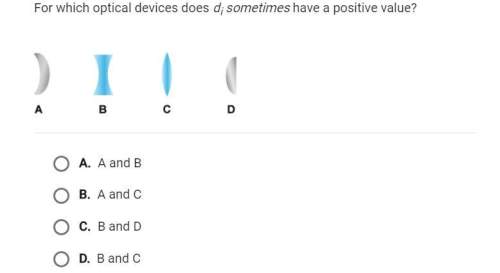
An object is released from rest at a height H near and above the surface of Earth. As the object falls toward the surface, Earth’s atmosphere exerts a resistive force on the object such that it reaches a terminal velocity before it reaches the ground. Which of the following claims is true? Select two answers.
The system consisting of only the object is an open system.
The system consisting of only the object is an open system.
A
Earth’s atmosphere does negative work on the object as it falls toward the surface.
Earth’s atmosphere does negative work on the object as it falls toward the surface.
B
The change in the object’s kinetic energy from the instant it is released from rest, to the instant it reaches terminal velocity, is zero.
The change in the object’s kinetic energy from the instant it is released from rest, to the instant it reaches terminal velocity, is zero.
C
The total mechanical energy of the object-Earth system remains constant at all times in which the object is in motion.

Answers: 2


Other questions on the subject: Physics

Physics, 22.06.2019 00:30, dondre54
During spring semester at mit, residents of the parallel buildings of the east campus dorms battle one another with large catapults that are made with surgical hose mounted on a window frame. a balloon filled with dyed water is placed in a pouch attached to the hose, which is then stretched through the width of the room. assume that the stretching of the hose obeys hooke's law with a spring constant of 89.0 n/m. if the hose is stretched by 5.80 m and then released, how much work does the force from the hose do on the balloon in the pouch by the time the hose reaches its relaxed length? unitst 3 number-1497 the tolerance is +/-5% open show work click if you would like to show work for this question:
Answers: 2

Physics, 22.06.2019 11:30, alupton4887
Arocket starts from rest and moves upward from the surface of the earth. for the first 10.0 s of its motion, the vertical acceleration of the rocket is given by ay = 12.80 m/s32t, where the +y-direction is upward. (a) what is the height of the rocket above the surface of the earth at t = 10.0 s? b) what is the speed of the rocket when it is 325 m above the surface of the earth?
Answers: 3

Physics, 22.06.2019 12:10, lks715
Point charges q1 = 51 µc and q2 = −27 µc are placed 1.0 m apart, with q2 on the right. what is the force (in n) on a third charge q3 = 19 µc placed midway between q1 and q2? (assume the positive direction is to the right. indicate the direction with the sign of your answer.)
Answers: 3

Physics, 22.06.2019 15:10, Bgreene2377
Suppose that f : rn → rm and that a ∈ k, where k is a connected subset of rn . suppose further that for each x ∈ k there exists a δx > 0 such that f(x) = f(y) for all y ∈ bδx (x). prove that f is constant on k; that is, f(x) = f(a) for all x ∈ k
Answers: 1
You know the right answer?
An object is released from rest at a height H near and above the surface of Earth. As the object fal...
Questions in other subjects:

Mathematics, 27.05.2021 14:50


English, 27.05.2021 14:50


English, 27.05.2021 15:00





Chemistry, 27.05.2021 15:00




